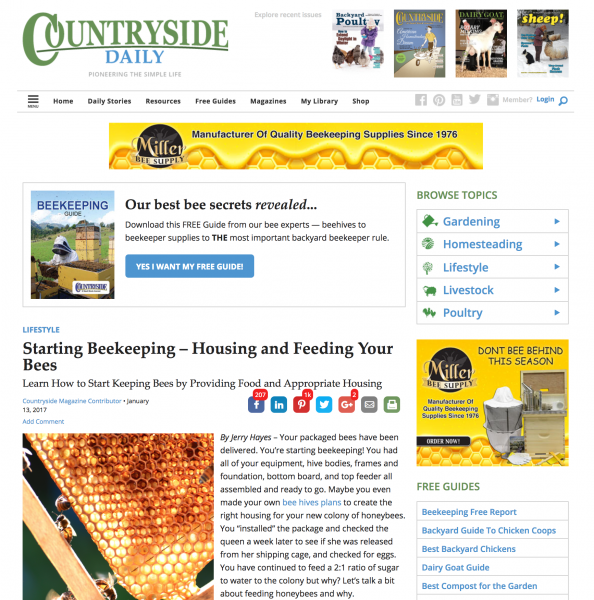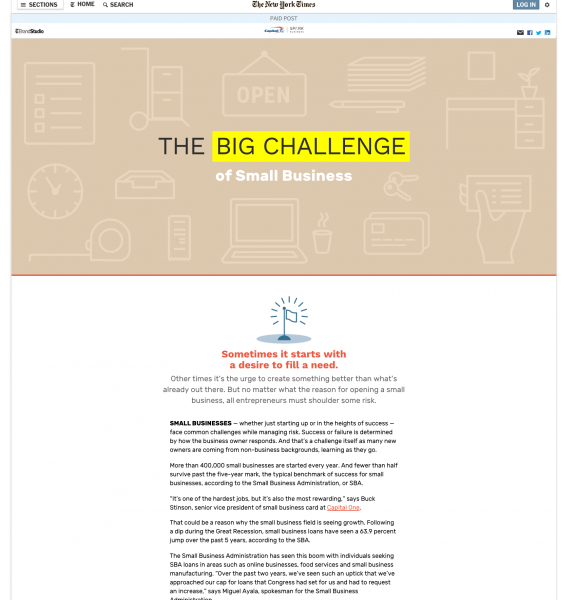These audience development models create marketing-qualified leads through freemiums that build larger, more monetizable email lists
![audience development models]()
“Audience development” is one of those terms that many people instinctively understand, but usually underestimate. Although media professionals have worked with the term for years, most have not bothered to define all the things that go on when executing an audience development strategy.
And at its most basic, that’s what it is, isn’t it? It’s about building an audience for your products. But this encompasses many distinct activities, and each one needs to be understood and carefully executed to achieve the goal.
Publishers have a long history of building audiences around specific topics, or niches. But the Internet economy changed the audience development model significantly. Many of the traditional practices still work, but the digital economy requires a more expansive, and agile, approach than ever before. Luckily, new tools and methodologies are developing all the time. Publishers have to decide which tools are right for them, and then conceive, develop and undertake a strategy to use these tools to build their audience.
![The Organic Audience Development Strategy Handbook]() Drive visitors to your publishing website in droves and efficiently turn those visitors into a loyal, enthusiastic, engaged audience whose email addresses are nestled snugly in your audience database – all without paying a penny to Google.
Drive visitors to your publishing website in droves and efficiently turn those visitors into a loyal, enthusiastic, engaged audience whose email addresses are nestled snugly in your audience database – all without paying a penny to Google.
Download a
FREE copy of our Organic Audience Development Strategy handbook.Previously, the only purpose of building an audience was to sell print subscriptions. Now, publishers are looking to sell digital subscriptions, develop leads for sponsors, increase memberships, and build communities. As the uses for your audience have expanded, so have the tools to build it.
When you are a Mequoda publisher, the goal of audience development is to get people on your email list. You will use that list to eventually sell them a product or monetize them through a sponsored message. The strategies we use rely on acting as a completely free resource of information – that’s how you build an audience.
Below we describe Mequoda’s seven audience development models. To make it easier to see how this works for a real publisher, we also discuss how the example might fit into the business plan for Rose Harper, CEO of Green Gardens Network. If you’re new to Mequoda, please take a moment to familiarize yourself with Green Gardens Network (GGN), our composite case study, and CEO Rose Harper, the embodiment of all our clients whose “example” we use as a teaching tool without revealing real publishers’ names or data.
Seven models for audience development
- Search
- Social
- Syndication
- Email
- Retail
- Paid Advertising
- Direct Mail
![audience development models]() Building an audience by driving search traffic is a fundamental component of Mequoda’s audience development strategy. For most publishers this means focusing on Google searches, the main search engine of the United States, and also the world.
Building an audience by driving search traffic is a fundamental component of Mequoda’s audience development strategy. For most publishers this means focusing on Google searches, the main search engine of the United States, and also the world.
A lot has been made of search engine optimization (SEO) over the last decade, and although a lot of has changed, SEO has continued to be a valuable tool to drive traffic to your web site. Optimizing your content for search isn’t always easy, but it pays off when your goal is to get more people to find you on the web. If an editor wants a new audience to find her or her content, they must learn to work with Google and other search engines. Good editors will strive to understand what people search for and ensure their content relates to those search terms and provides quality for the reader.
At GGN, we have used the Google Keyword Planner and identified 24 primary topic categories of content, and found hundreds of keywords for each topic. In total, this represents more than 10,000 keyword phrases relating to Rose’s content. Those terms are searched more than 137 million times each year – 137,454,720 times, to be exact.
But the Google Keyword Planner does not reveal every keyword phrase that is related to primary topics. The tool reveals only those terms that have been searched for at least 10 times per month during the trailing 12 months, and as you may know by now, Google pairs together single and plural search terms.
Our research has revealed that the long tail for organic search is very close to a standard long tail distribution. The keyword phrases Google reveals represent only about 20 percent of total search volume in the United States for a given cluster of keyword phrases. This means 80 percent of the search traffic which will arrive at your web site will come using long tail keyword phrases that are used less than 120 times each year. So, to determine the size of the entire search universe, you multiply your known keyword universe by four, a number we call the long-tail factor.
Using this methodology, we take Rose’s initial keyword phrase universe — 137,454,720 – and multiplied the number by four, equaling a long-tail search volume of 549,818,880. When added to the initial phrase list, we determined that Rose’s keyword universe size is closer to 687,273,600 searches per year.
To tap into this universe, Rose’s Chief Content Officer will work with the editorial staff to ensure all content is optimized for search. With some old-fashioned editorial hard work, GGN’s content will be found more often by people searching the web.
Once someone finds the GGN content, they will be offered a free report – aligned with the topic that brought them to the site – in exchange for an email address. Converting visitors into email subscribers is a fundamental method for growing an email list and building an audience.
Read more about the search audience development model.
![audience development models]() At Mequoda, we’ve found that social media followers convert better into email subscribers than anyone else. At its heart, social media is about communicating and building a community. People with a common interest – whether in business, hobbies, activities, or anything else – share information and advice and soon build a presence around each other. Best of all, these people are usually active participants, and not just lurkers.
At Mequoda, we’ve found that social media followers convert better into email subscribers than anyone else. At its heart, social media is about communicating and building a community. People with a common interest – whether in business, hobbies, activities, or anything else – share information and advice and soon build a presence around each other. Best of all, these people are usually active participants, and not just lurkers.
Using social media to share valuable information will grant you access to those communities, and allow you to become a trusted source. If you really want to get your audience invested, give them things like a peek behind the scenes. You can give them a sense of your day-to-day process, and let them have a say in what you produce.
Managing social media can be time consuming. Rose from GGN will be publishing 4 pieces of content per day, and most Mequoda publishers are publishing at least three times per day. When it comes to managing the social that goes along with each post, we find that most online editors don’t have a system, and are typically scheduling social on the same day each article publishes.
That approach takes much more time than necessary, and can leave social media languishing when the editor goes on vacation or calls in sick. At Mequoda we recommend a long-term social media strategy for evergreen content that we call the 12x12x12. The premise is this:
- For every article you write, write 12 unique twitter posts and two unique Facebook posts.
- Schedule your Tweets out once per day for the first 12 days.
- And then again once per month for the next 12 months.
- Schedule your first Facebook post (which can double for Google+ or LinkedIn) on the day the article publishes.
- Schedule the second Facebook post for six months later.
When evergreen content and blockbuster posts are recycled, we recommend giving these posts the same treatment (in Rose’s case, some of those 12 are recycled and blockbuster posts).
Additionally, we recommend aligning your email promotions with your social promotions. It will help you remember not to forget these very imporant posts are part of your regularly scheduled program.
Of course, social media platforms differ, and not every one may be right for your organization. Facebook seems to work for both B2B and B2C audiences, although it tends to work best for B2C. Some topics, especially in B2C, lend themselves to photos or how-to videos (Pinterest and YouTube), while others, especially in B2B, are better for sharing thought leadership or providing a forum for more comments and sharing with others (Twitter and LinkedIn).
For GGN, the social media audience development plan involves sharing information on Facebook, Twitter, Pinterest, and YouTube. The things Rose shares drives people back to her website where they are offered a free report in exchange for an email address.
Read more about the social audience development model.
![audience development models]() Content syndication refers to the process of pushing your content out to third-party sites, either as full articles, portions, snippets, or just headlines. These relationships have to be approached carefully, but have proven benefits for getting your content distributed and building a bigger audience. Your content is essentially riding along with similar content to reach more people.
Content syndication refers to the process of pushing your content out to third-party sites, either as full articles, portions, snippets, or just headlines. These relationships have to be approached carefully, but have proven benefits for getting your content distributed and building a bigger audience. Your content is essentially riding along with similar content to reach more people.
Many ad-dependent websites need good content to keep people interested, and to satisfy advertisers’ traffic goals. So, they need strong, informative content, preferably that is optimized for search, and some will even pay to use it. The market can be ripe with opportunities, but that doesn’t mean you don’t have to be careful.
Don’t forget that your goal is to build an audience for your brand and your website. Make sure your content is properly identified and that the path back to your site is clear.
Publishing duplicate content across portals can bump down your own pages in search results, and give priority to the sites you’re syndicating on. That’s why when done manually – for example, when you publish on Medium, LinkedIn Pulse, or other user-generated syndication methods that are popular right now – you choose a different title, and you use a snippet of the content, not the content in its entirely. You also include a link back to the original article, and when possible, make it canonical.
Publishers should remember to only syndicate content to appropriate sites. Examine and evaluate the portals in your market. Does your content fit there? Can you do anything to make your content stand out, like including a chart, video, or infographic
For Green Gardens Network, there is not a huge amount of opportunity here outside the social channels above. Unlike categories of content such as travel or food, there aren’t a lot of big portal websites about gardening, however outside of syndication, Rose could reach out to the About.com Expert on About.com’s gardening channel and ask to write a guest post that links back to GGN (About.com doesn’t allow duplicate content, either).
There are also a few magazine websites, such as finegardening.com, that feature blog posts from contributors. The American Rose Society also features guest contributions. To the extent Rose knows of these sites, and knows her audience seeks them out, she would try to get some of her content listed there, with a link back to her own portal.
Read more about the syndication audience development model.
![The Organic Audience Development Strategy Handbook]() Drive visitors to your publishing website in droves and efficiently turn those visitors into a loyal, enthusiastic, engaged audience whose email addresses are nestled snugly in your audience database – all without paying a penny to Google.
Drive visitors to your publishing website in droves and efficiently turn those visitors into a loyal, enthusiastic, engaged audience whose email addresses are nestled snugly in your audience database – all without paying a penny to Google.
Download a
FREE copy of our Organic Audience Development Strategy handbook.![audience development models]() Email is an integral part of Mequoda’s strategy to Attract, Capture, Engage and Monetize an audience. We want to attract an audience through methods such as optimizing content for search and then have appropriate architecture on the website to capture a visitor’s email addresses in exchange for a valuable piece of free content.
Email is an integral part of Mequoda’s strategy to Attract, Capture, Engage and Monetize an audience. We want to attract an audience through methods such as optimizing content for search and then have appropriate architecture on the website to capture a visitor’s email addresses in exchange for a valuable piece of free content.
But what are you going to do now that you have these email addresses? Simply sending them one marketing message after another will lead to unsubscribes. And those who don’t unsubscribe will stop opening your email and devalue your brand if all you do is market them a product with every email.
To maintain an engaged audience and keep your email list numbers up, publishers should send regular content-based emails with more valuable free content. Sending regular email keeps your audience engaged with your brand, making them more likely to think of you first when it comes time to buy.
If you fail to keep your audience engaged, they will drop off your email list and you will never have a chance to monetize them. They will be gone. Maybe forever. So, keep the good content flowing.
Whether or not your efforts are successful can be determined by your email metrics. Is your unsubscribe rate increasing or decreasing? Is your email click-through rate increasing or decreasing? Is your open rate increasing or decreasing?
In order to keep her metrics positive, Rose Harper at Green Gardens will keep her audience engaged by sending content emails 7 days a week. Monday through Saturday she will send the Green Gardens Daily, an email packed with content taken from the free portal website. On Sunday, she will send Green Gardens Weekly, an email listing all the content posted in the daily emails during the week.
Each edition of the Green Gardens Daily email will be a stacked email (more on stacked emails here) with four feature headlines and snippets. In between the snippets will be sponsored text ads, as well as magazine and tour reviews to drive the audience to those parts of the web site. Over the six days, all of Rose’s 24 topic areas will be covered.
On Sunday, the 24 headlines and snippets will be divided into 12 segments of two stories, with spaces in between filled by sponsors text ads, magazine reviews, tour reviews and a text ad for another free report.
Read more about the email audience development model.
![audience development models]() Most people associate newsstand sales with revenue generation, but it can be a significant channel for building an audience. Generally, newsstand sales aren’t a major source of revenue compared with subscriptions and sponsorships, but they will help create brand awareness, contribute to audience development and drive subscriptions.
Most people associate newsstand sales with revenue generation, but it can be a significant channel for building an audience. Generally, newsstand sales aren’t a major source of revenue compared with subscriptions and sponsorships, but they will help create brand awareness, contribute to audience development and drive subscriptions.
There are two types of newsstand distributions – print and digital.
For print, newsstand distribution flows through two distinct channels: wholesale or direct. Wholesale goes after the entire range of distribution opportunities, including major retailers and airports. For example, WalMart is the biggest retail outlet for newsstand magazine distribution in the United States. Getting your magazine into WalMart and other mass distribution stores requires going through a wholesale distributor. Generally, wholesale distribution is used by larger publishing companies such as Hearst and Meredith.
Many smaller, or niche publishers, choose the direct distribution option. This channel includes bookstores and specialty channels (such as Whole Foods, and Home Depot), outdoor stores, craft stores, and garden centers.
Many publishers who are sinking a lot of money into their print quality consider direct distribution because it is a lower risk, and a lower draw, as a way to begin distribution. The remit rate and efficiencies are markedly higher, but you are going to miss the important distribution channels such as WalMart.
For publishers launching a mass market title that relies on advertisers and rate base, going the wholesale route is necessary. Independent publishers who want to grow organically are better off starting with direct distribution.
Digital newsstand sales can also provide some benefits. If someone with a tablet wants a magazine, they are almost always looking for it on a digital newsstand or app store.
Being on a digital newsstand gives publishers a marketplace that 20% of their subscribers find them on. That’s a percentage to take seriously. The most popular digital newsstand is from Apple (technically now their app store since they dissolved the newsstand), but Amazon (Kindle) and Google (Play) also have digital newsstand options.
In the case of Green Gardens Network, for print distribution, Rose Harper will be using a direct distributor. Her strategy is to get the Green Gardens magazine into specialty bookstores as well as garden centers and even places like Home Depot that sell many garden tools and products.
In digital, Rose will be offering single copies for sale through all the newsstands. This gives her the best opportunity to be found by readers who prefer a tablet experience.
Read more about the retail audience development model.
![audience development models]() Paid advertising opportunities come in all shapes and sizes. Advertising on the web has become commonplace, but that doesn’t mean consumers have stopped responding to traditional advertising either.
Paid advertising opportunities come in all shapes and sizes. Advertising on the web has become commonplace, but that doesn’t mean consumers have stopped responding to traditional advertising either.
Although we at Mequoda are big proponents of organic search, there is no denying that paid search also can provide direct benefits to a publisher. If you have a relevant offer that gets clicked, a paid listing can drive a lot of traffic to your web site and your product offers.
One of the most common types of paid advertising used today is a Google pay-per-click (PPC) campaign. For a Google PPC campaign, the publisher pays Google however much they wish to have them list ads at the top of organic search listings. When someone clicks on the ad, the publisher pays the current Cost Per Click from their account. Google stops running the ads when the funds are depleted.
Twitter and Facebook both offer cheaper versions of PPC on their platforms. Although it may not have the same reach of a Google campaign, generally social media brings more highly qualified prospects because you have more specific demographics and consumer behavior you can tap into when targeting ads.
Paid ads can be used to offer someone the ability to click on an ad that leads directly to your Rapid Conversion Landing Page (RCLP), subscribe to your email newsletter and then be upsold to a paid product later. Publishers also can buy ads that lead directly to a product – although many publishers believe they can sell more ads to an email subscriber over time than they can a one-time web visitor who is meeting you for the first time via an ad.
Of course, publishers also can pay for ads on other web sites. Most other websites charge a flat fee for a paid ad, for a period of time, based on some implied number of impressions. Larger website advertising networks will actually charge for the number of impressions delivered on a CPM (cost per thousand) basis.
At Green Gardens’ Network, Rose’s strategy is to develop a Google PPC campaign, and use it for direct sales of the magazine and her tours. She also will utilize social as a PPC option as well. Rose is already fully engaged with her audience on Twitter and Facebook and social media followers are more qualified prospects.
Read more about the paid advertising audience development model.
![audience development models]() Direct mail is a traditional marketing channel for publishers, but it also has a lot of value for audience development. Although the ROI for direct mail will be lower than for some of these other sources, it often provides the most valuable audience members in terms of annual spending per subscriber. When combined with the ability to mail large volumes to lists that are not available through other channels, direct mail is still a great way to drive website traffic, build email circulation and sell products.
Direct mail is a traditional marketing channel for publishers, but it also has a lot of value for audience development. Although the ROI for direct mail will be lower than for some of these other sources, it often provides the most valuable audience members in terms of annual spending per subscriber. When combined with the ability to mail large volumes to lists that are not available through other channels, direct mail is still a great way to drive website traffic, build email circulation and sell products.
Direct mail traffic that arrives on your RCLP will convert at the highest rate of any source we’ve measured. So, try leading with a free report and push people directly to your RCLP with an easy, vanity email address.
Rose Harper sends a lot of direct mail to promote her magazine. Occasionally, as a test, instead of promoting her magazine directly, she promotes free reports so she can capture more email addresses and promote the magazine, tours and classes later through email.
Read more about the direct mail audience development model.
Traditional publishers, like Rose Harper, have a tremendous opportunity to build their email list and develop a dedicated audience. Mequoda’s seven audience development models can help any publisher create and maintain a list to monetize over time.
Remember that free, valuable content is the best way to build an audience. Using that content to entice visitors to provide an email address is the most effective way of building your email list – a list you will use to eventually sell a product or monetize them through a sponsored message.
The post The 7 Mequoda Audience Development Models appeared first on Mequoda Daily.
![DMMS]() Digital magazine subscribers confessed to us everything they want in a digital magazine. Find out what they said in our FREE downloadable Mequoda Digital Magazine Market Study.
Digital magazine subscribers confessed to us everything they want in a digital magazine. Find out what they said in our FREE downloadable Mequoda Digital Magazine Market Study.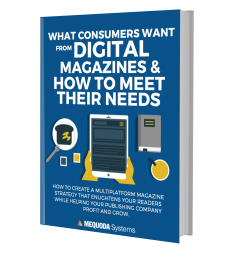 Digital magazine subscribers confessed to us everything they want in a digital magazine. Find out what they said in our FREE downloadable
Digital magazine subscribers confessed to us everything they want in a digital magazine. Find out what they said in our FREE downloadable 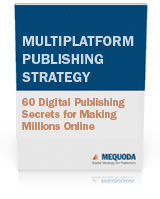

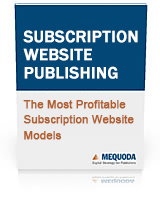
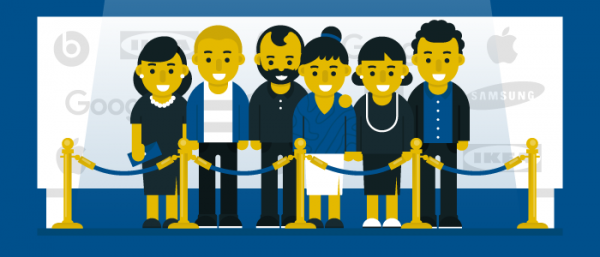
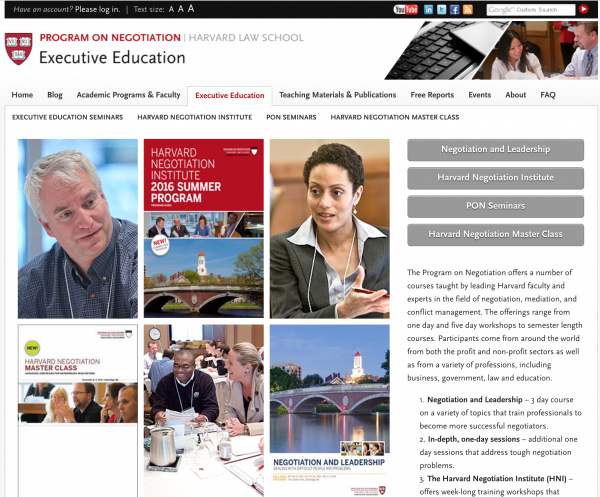
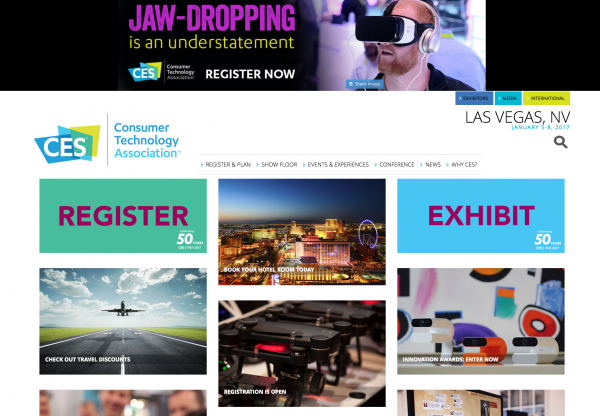

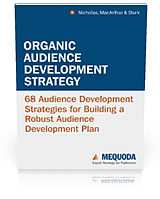
 Building an audience by driving search traffic is a fundamental component of Mequoda’s audience development strategy. For most publishers this means focusing on Google searches, the main search engine of the United States, and also the world.
Building an audience by driving search traffic is a fundamental component of Mequoda’s audience development strategy. For most publishers this means focusing on Google searches, the main search engine of the United States, and also the world.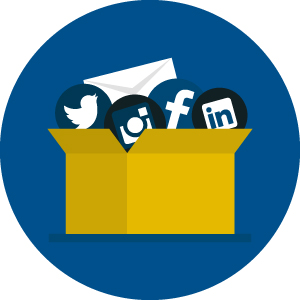 At Mequoda, we’ve found that social media followers convert better into email subscribers than anyone else. At its heart, social media is about communicating and building a community. People with a common interest – whether in business, hobbies, activities, or anything else – share information and advice and soon build a presence around each other. Best of all, these people are usually active participants, and not just lurkers.
At Mequoda, we’ve found that social media followers convert better into email subscribers than anyone else. At its heart, social media is about communicating and building a community. People with a common interest – whether in business, hobbies, activities, or anything else – share information and advice and soon build a presence around each other. Best of all, these people are usually active participants, and not just lurkers.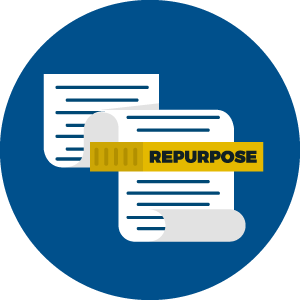 Content syndication refers to the process of pushing your content out to third-party sites, either as full articles, portions, snippets, or just headlines. These relationships have to be approached carefully, but have proven benefits for getting your content distributed and building a bigger audience. Your content is essentially riding along with similar content to reach more people.
Content syndication refers to the process of pushing your content out to third-party sites, either as full articles, portions, snippets, or just headlines. These relationships have to be approached carefully, but have proven benefits for getting your content distributed and building a bigger audience. Your content is essentially riding along with similar content to reach more people.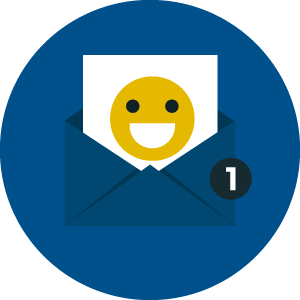 Email is an integral part of Mequoda’s strategy to
Email is an integral part of Mequoda’s strategy to  Most people associate newsstand sales with revenue generation, but it can be a significant channel for building an audience. Generally, newsstand sales aren’t a major source of revenue compared with subscriptions and sponsorships, but they will help create brand awareness, contribute to audience development and drive subscriptions.
Most people associate newsstand sales with revenue generation, but it can be a significant channel for building an audience. Generally, newsstand sales aren’t a major source of revenue compared with subscriptions and sponsorships, but they will help create brand awareness, contribute to audience development and drive subscriptions. Paid advertising opportunities come in all shapes and sizes. Advertising on the web has become commonplace, but that doesn’t mean consumers have stopped responding to traditional advertising either.
Paid advertising opportunities come in all shapes and sizes. Advertising on the web has become commonplace, but that doesn’t mean consumers have stopped responding to traditional advertising either.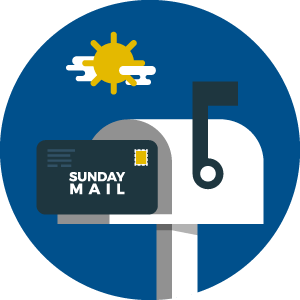 Direct mail is a traditional marketing channel for publishers, but it also has a lot of value for audience development. Although the ROI for direct mail will be lower than for some of these other sources, it often provides the most valuable audience members in terms of annual spending per subscriber. When combined with the ability to mail large volumes to lists that are not available through other channels, direct mail is still a great way to drive website traffic, build email circulation and sell products.
Direct mail is a traditional marketing channel for publishers, but it also has a lot of value for audience development. Although the ROI for direct mail will be lower than for some of these other sources, it often provides the most valuable audience members in terms of annual spending per subscriber. When combined with the ability to mail large volumes to lists that are not available through other channels, direct mail is still a great way to drive website traffic, build email circulation and sell products.


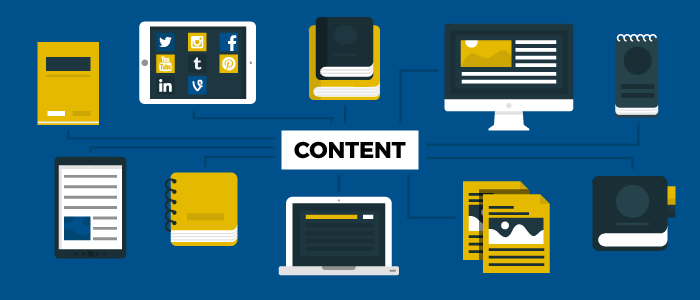
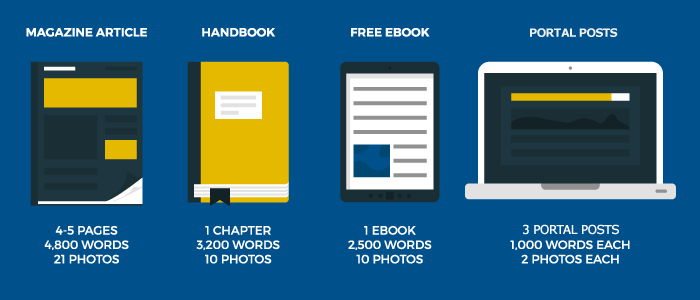

 What comes to mind when you think about
What comes to mind when you think about 